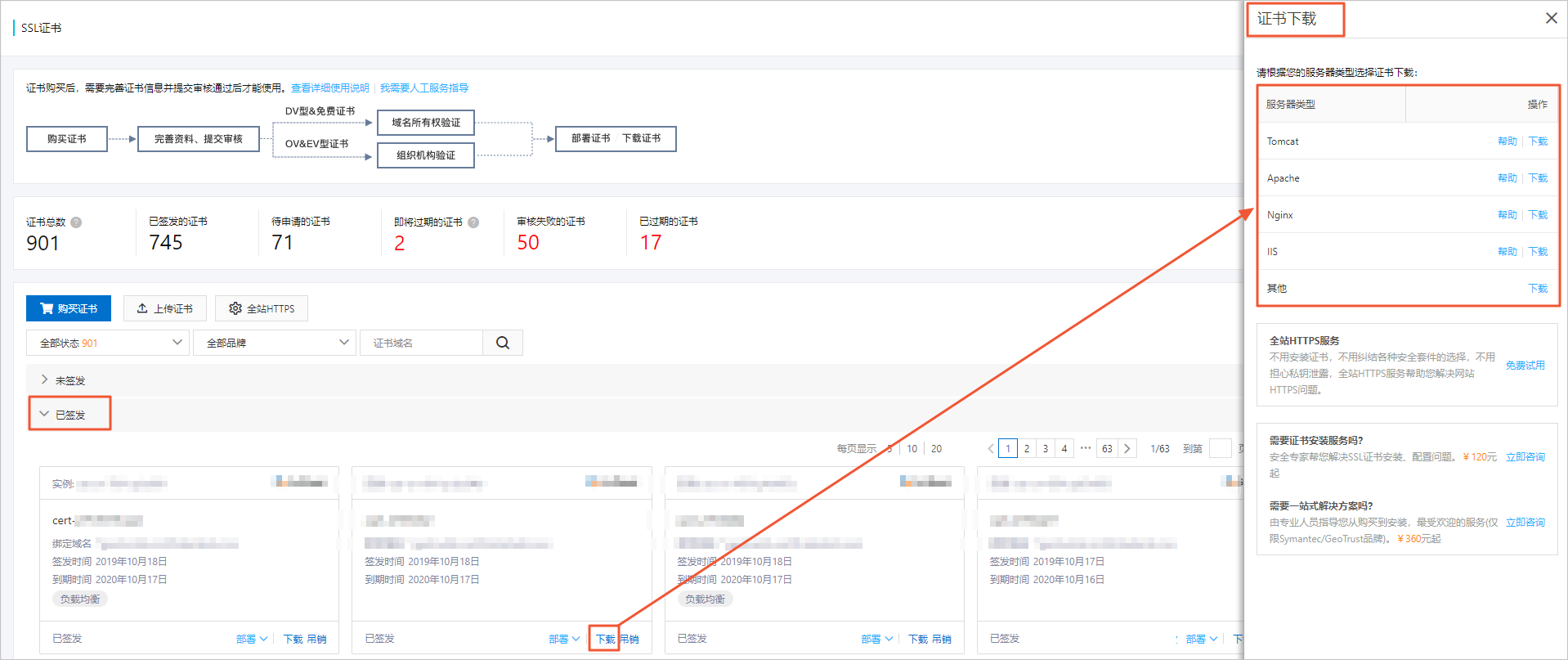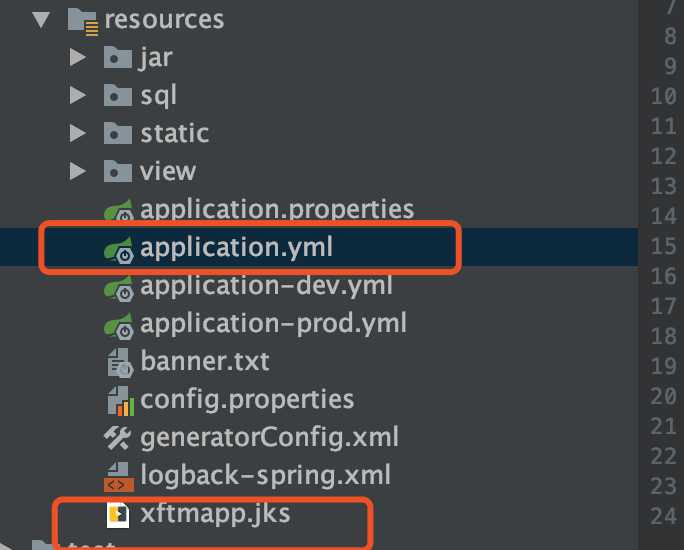标签:== template style als cte pfx http 目录 private
1、在云平台下载证书
1、登录阿里云SSL证书控制台。
2、在SSL证书页面,单击已签发标签,定位到需要下载的证书并单击证书卡片右下角的下载。
3、定位到您需要安装证书的服务器类型并单击右侧操作栏的下载将证书压缩包下载到本地。
4、将证书解压缩后安装到您的Web服务器上。
阿里云SSL证书支持安装到以下类型的Web服务器:Tomcat(笔者这里下载的是这个证书,以下都是基于此证书进行操作)ApacheNginxIIS其他
2、将下载的证书通过jdk自带工具生成jks文件
1、进入到jdk的bin目录,进行cmd操作
2、 以下为操作命令,其中第一处标红的字,为你下载的证书的路径,第二处标红为你给自己的证书取的名字
keytool -importkeystore -srckeystore D:\3358419__xftm.com_tomcat\3358419__xftm.com.pfx -destkeystore xftmapp.jks -srcstoretype PKCS12 - deststoretype JKS
3、具体操作如下,笔者红色框框标出来的为笔者操作过程中的错误,以及需要注意的事项

3、SpringBoot代码
1、将步骤2生成的.jks文件复制到项目中,与application同目录

2、application启动类
package org.xftm.app; import org.apache.catalina.Context; import org.apache.catalina.connector.Connector; import org.apache.tomcat.util.descriptor.web.SecurityCollection; import org.apache.tomcat.util.descriptor.web.SecurityConstraint; import org.springframework.beans.factory.annotation.Autowired; import org.springframework.beans.factory.annotation.Value; import org.springframework.boot.Banner; import org.springframework.boot.SpringApplication; import org.springframework.boot.autoconfigure.SpringBootApplication; import org.springframework.boot.context.embedded.EmbeddedServletContainerFactory; import org.springframework.boot.context.embedded.tomcat.TomcatEmbeddedServletContainerFactory; import org.springframework.boot.web.client.RestTemplateBuilder; import org.springframework.context.annotation.Bean; import org.springframework.web.client.RestTemplate; import springfox.documentation.swagger2.annotations.EnableSwagger2; @SpringBootApplication @EnableSwagger2//Swaggerapi集成,入不需要可直接删除 public class Application { @Value("${server.httpPort}") private String httpPort;//在yml文件中自定义的http端口 @Value("${server.httpsPort}") private String httpsPort; //在yml文件中自定义https端口 @Autowired RestTemplateBuilder restTemplateBuilider; public static void main(String[] args) { SpringApplication application = new SpringApplication(Application.class); application.setBannerMode(Banner.Mode.CONSOLE);//笔者自定义的banner 此处可按照Springboot默认启动方式启动 application.run(args); } @Bean public EmbeddedServletContainerFactory servletContainer() { TomcatEmbeddedServletContainerFactory tomcat = new TomcatEmbeddedServletContainerFactory() { @Override protected void postProcessContext(Context context) { SecurityConstraint constraint = new SecurityConstraint(); constraint.setUserConstraint("CONFIDENTIAL"); SecurityCollection collection = new SecurityCollection(); collection.addPattern("/*"); constraint.addCollection(collection); context.addConstraint(constraint); } }; tomcat.addAdditionalTomcatConnectors(httpConnector()); return tomcat; } @Bean public Connector httpConnector() { Connector connector = new Connector("org.apache.coyote.http11.Http11NioProtocol"); connector.setScheme("http"); System.out.println("httpport="+httpPort); System.out.println("httpsPort="+httpsPort); // Connector监听的http的端口号 connector.setPort(httpPort ==null?8080:Integer.valueOf(httpPort)); connector.setSecure(false); // 监听到http的端口号后转向到的https的端口号 connector.setRedirectPort(httpsPort ==null?443:Integer.valueOf(httpPort)); return connector; } @Bean public RestTemplate restTemplate() { // 使用build()方法进行获取 return restTemplateBuilider.build(); } }
3、ssl的配置
server: #htpp转发到https的端口 port: 8443 #http请求端口 httpPort: 8767 #https请求端口 httpsPort: 8443 ssl: key-store: classpath:xftmapp.jks key-store-password: TVPxezV9 key-store-type: JKS key-alias: alias context-path: /XftmApp #address: 0.0.0.0 tomcat: #uri-encoding: UTF-8 max-threads: 2000 max-connections: 20000
4、测试(笔者不演示自己的路径)
请求方式为:http://ip:httpPort/
请求方式为:https://ip:httpsPort/
标签:== template style als cte pfx http 目录 private
原文地址:https://www.cnblogs.com/JavaHxm/p/12202444.html